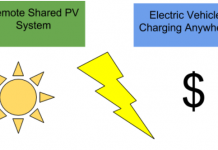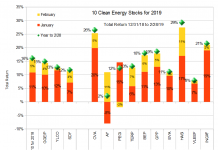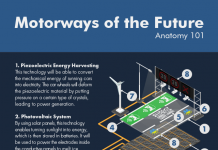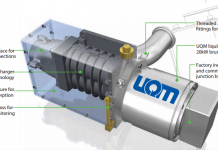John Petersen
October has been a fun month for me as JD Power and Associates rained on the electric vehicle parade with a new report “Green Drive 2020; More Hope than Reality?” that forecast a 1.8% global market penetration rate for cars with plugs in 2020; Maxwell Technologies (MXWL) announced a design win in the automotive stop-start market; Pike Research issued a new report on power systems for hybrid locomotives; Nanomarkets LLC reported that lead-carbon batteries will be a leading contender in the $1 billion wind-power storage market; Lux Research began advertising an upcoming webinar to introduce their new report on stop-start micro-hybrid systems that will be used in 34 million cars per year by mid-decade; and Johnson Controls (JCI) didn’t even mention lithium in its fourth quarter earnings call. After a couple years of feeling like I was wandering alone in the wilderness, I’m glad for the company.
The JD Power report was based on detailed surveys of consumer attitudes in the US, Europe, Japan and China and concluded that there were seven major hurdles to market acceptance of electric vehicles:
- Range anxiety;
- Support infrastructure deficiencies;
- Power and performance deficiencies;
- Fuel economy concerns;
- Limited battery life and replacement cost concerns;
- Overall cost of ownership concerns; and
- Charging requirements that will keep EVs out of service for several hours a day.
While the list is fairly comprehensive, it overlooks two overriding economic realities that strike me as even more important.
First, we’re mired in the depths of the worst recession since the 1930s. While the economy is slowly recovering, consumers in all income brackets are getting more conservative in their spending and increasing their savings at rates not seen in decades. HEVs were introduced in 1999 and took ten years to achieve a 2% market penetration in a strong economy. That makes it very hard to swallow the suggestion that plug-in vehicles, which promise less simplicity, reliability and performance at a higher cost, will achieve comparable results in a weak economy.
Second, life is unpredictable, people are frequently careless and in a problem situation where a driver can blame himself or blame his car, it’s a safe bet that the car will be portrayed as the villain. It won’t matter how good the new generation of EVs are in reality. They will still suffer immense reputation damage as tales of users who forgot to recharge their batteries, who couldn’t use their car in an emergency and who pressed their luck “just this once” begin to proliferate and compound. The inevitable horror stories can’t be avoided and they can’t help but dampen or even kill consumer demand.
I expect electric cars to be the great technological failure of the decade and am the first to admit that my views are extreme, but my reasons for those views are well documented in my other articles including “Alice in EVland; Six Impossible Things.” The only thing that will prove me right or wrong is time.
Notwithstanding a cynical view of electric cars that need huge amounts of battery capacity and use it inefficiently, I believe there are tremendous opportunities in heavy applications like buses, commercial fleets and locomotives that are prodigious users of energy and represent cost-effective markets for conservation technologies. There are also tremendous opportunities for cost-effective storage to maximize the stability and usefulness of wind and solar power. Last but not least, the humble baby steps applications like stop-start idle elimination will surprise everyone with their growth and vitality.
Once you get beyond delusional visions of electric cars, nobody cares what kind of battery a device uses. There’s a reason that 85% of the electric bikes in Asia use lead-acid batteries – they’re good enough for the job and they’re far cheaper than the alternatives. In all real battery markets, engineers and cost accountants are responsible for choosing the best energy storage device for a particular application. In applications where size and weight are mission critical constraints, the designers will choose lithium-ion batteries. In applications where size and weight don’t matter, other technologies will frequently be a better choice. No matter how hard people beat the table, energy storage will never be cool; batteries will always be a grudge purchase; and we’ll all keep using the adjective damned to modify the noun battery.
For a little over two years my consistent message has been that developers of gee-whiz battery technologies for electric vehicles are dangerously overpriced while established manufacturers of cheap and reliable batteries for the masses trade at bargain basement levels. That dynamic has not changed yet, but the mainstream is finally beginning to consider the vast gulf between technically feasible and economically sensible. As the EV rose wilts and more mundane applications like buses, commercial vehicles, hybrid locomotives, renewable power integration and stop-start idle elimination generate profits rather than losses, market expectations and capitalizations will adjust to business realities. Wayne Gretzky was great because he tried to play where the puck was going to be. Prudent investors will do the same thing.
Disclosure: Author is a former director of Axion Power International (AXPW.OB) and owns a substantial long position in its common stock.









The yellow and purple Audi A2 car took around seven hours to complete the 600-kilometre (372-mile) stretch, even had the heating on.
Driver Mirko Hannemann, the chief of DBM Energy, drove the distance at 90 km/h (55 miles per hour) on average, had the heat on and was able to whisk around a few more miles in the city. When the A2 electric finished, it still had 18% of the initial electric charge in the battery.
It has a lithium-metal-polymer battery. DBM Energy, the company that built the battery and electric motors into the Audi A2, said the battery would function for 500,000 kilometres.
A representative of the car said the Audi still featured all the usual creature comforts such as power steering, air-conditioning and even heated seats as well, so it was not like the car was especially made for long distance record attempts
The German engineers said their car was special because the battery was not installed inside the luggage area, but under the luggage area, meaning the full interior space of the car was still available
The battery, based on what DBM Energy calls the KOLIBRI AlphaPolymer Technology, comes with 97 percent efficiency and can be charged at virtually every socket. Plugged into a high-voltage direct-current source, the battery can be fully loaded within 6 minutes
The young inventor couldn’t give an exact price for his battery — he said that was dependent on scaling effects — but vowed it wouldn’t just be more powerful, but in the end also cheaper than conventional lithium ion batteries.
What’s more important, the technology which made the trip possible is available today.
German Economics Minister Rainer Bruederle, who subsidized the drive, said it showed electric cars are not utopian but really work.
The Audi A2 test was discussed here:
http://green.autoblog.com/2010/10/27/converted-audi-a2-claims-new-electric-vehicle-distance-record-3
The battery apparently has good size weight performance and the drive was impressive performance art, but a 115 kWh battery pack will never be cheap enough to pay for itself in fuel savings.
The biggest problem with EV claims is that there’s always a disconnect between technically possible and economically sensible.
Today’s Washington Post has a good opinion piece titled “Obama’s electric-car cult”
http://www.washingtonpost.com/wp-dyn/content/article/2010/10/29/AR2010102905959.html
Axion took a dive today, just keeps getting worse. I like the company, and I hate to sell when I’m down, but it’s been a painful ride. I should have taken some gains early on, I realize now. Should I just wait for their quarterly report and figure out if there’s some catalyst I can hang my hat on?
p.s. Perhaps today’s dive has something to do with Election Day?
There is no accounting for day to day market activity but the persistent selling that existed earlier this year has evaporated. I know of nothing that has me concerned about my holdings, and my average cost is well over $1 per share.
Mr. Peterson:
Do you think Senator Spector’s election loss has had anything to do with the down turn in the short term stock price of Axion? He was a big supporter in trying to get government money for them wasn’t he?
While the Senator was a solid supporter, I’m not sure how effective he was in the old Senate or would have been in the new Senate. While politics creates all sorts of interesting wrinkles and sub-plots, the ultimate determinant of Axion’s success will be the performance of the PbC battery. I expect to receive my ELBC proceedings by the end of next week. At that time I’ll be able to do a better job of describing Axion’s position in the market and quoting chapter and verse instead of memory.
The market for Axion’s stock got a bad case of the jitters earlier this year when a couple of large blocks that were held by statutory liquidators were forced into the market. I believe the liquidators are out of stock now because the pushing and shoving between PERT and UBSS has abated and there are no dominant market makers sitting on the low offer day after day. My best guess is that we’re seeing some of the investors from last December redeploy their assets because their plans to hold for 6 to 9 months, sell enough to get their seed corn back and ride for the long-term on the houses money didn’t work out. Frankly I’m happy to see the stock moving into stronger hands.